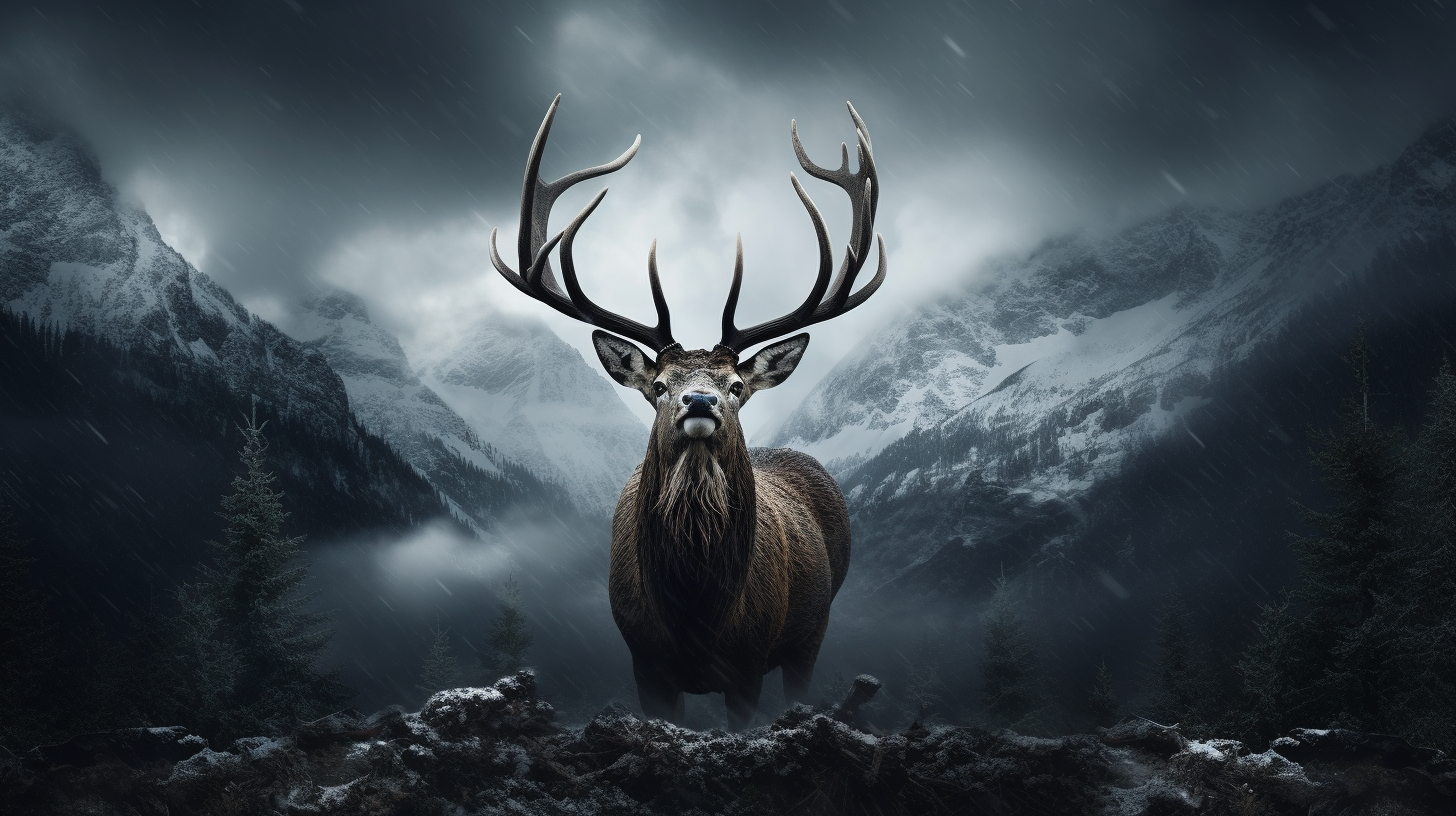Have you ever wondered how weather conditions affect the growth of deer antlers? Does temperature, rainfall, or other environmental factors have an impact on the size and quality of these majestic appendages? In this article, we will delve into the relationship between deer antler growth and weather conditions, uncovering the fascinating ways in which climate influences this natural phenomenon.
Understanding Deer Antler Growth:
Before we delve into the impact of weather conditions on antler growth, let’s first understand the process itself. Deer antlers are formed from bone, and they grow rapidly during the spring and summer months. The rate of antler growth is truly remarkable, with some deer being able to grow an inch of antler per day! This growth is fueled by a rich blood supply, which delivers essential nutrients and minerals to the growing antlers.
Deer antlers serve multiple purposes, including attracting mates, establishing dominance, and defending against predators. As a result, antler size and quality play a crucial role in a deer’s survival and reproductive success. Factors such as diet, genetics, age, and overall health can all influence antler growth. However, weather conditions also have a significant impact on this process.
The Role of Temperature:
One of the primary weather factors that influence antler growth is temperature. Both hot and cold temperature extremes can affect the growth and development of deer antlers. Let’s explore how:
- Hot Temperatures:
During the summer months, when temperatures are high, deer may experience heat stress. Heat stress can lead to reduced appetite and decreased food intake, which ultimately affects the availability of nutrients necessary for antler growth. Additionally, high temperatures can cause dehydration, further compromising a deer’s overall health and potentially stunting antler growth.
- Cold Temperatures:
On the other hand, cold temperatures can also impact antler growth. Deer require a sufficient amount of food to fuel the energy-intensive process of antler growth. During the winter months, when food sources are scarce, deer may struggle to find adequate nutrition. This can result in reduced antler growth or even the shedding of antlers before they fully develop.
The Role of Rainfall:
In addition to temperature, rainfall patterns also play a significant role in deer antler growth. Let’s take a closer look at how precipitation affects the development of these majestic appendages:
- Rainfall Quantity:
Sufficient rainfall is essential for the growth of nutrient-rich vegetation, which serves as a vital food source for deer. Adequate rainfall ensures that plants have enough water to thrive, ultimately providing deer with the necessary nutrients to support antler growth. In areas experiencing drought or below-average rainfall, deer may face limited food supply, leading to stunted antler growth or smaller antler size.
- Rainfall Timing:
The timing of rainfall also plays a crucial role in antler growth. Spring is a critical period for antler development, as deer rely on the growth of nutrient-rich vegetation during this time. If rainfall is delayed or occurs at irregular intervals during the spring months, it can disrupt the availability of food sources. This, in turn, can negatively impact antler growth.
The Impact of Other Weather Factors:
While temperature and rainfall are key contributors to deer antler growth, other weather factors can also come into play. Let’s explore some additional weather conditions that may influence antler development:
- Photoperiod:
Photoperiod refers to the duration of light exposure in a day. The changing photoperiod throughout the year acts as a signal for deer to begin the process of antler growth. Shorter daylight hours during the fall trigger the production of hormones that initiate the growth of antlers. Therefore, variations in the length of daylight can impact antler growth patterns.
- Barometric Pressure:
Some studies suggest that changes in barometric pressure may affect antler growth. Fluctuations in pressure can lead to changes in blood flow and nutrient delivery to the growing antlers. However, more research is needed to fully understand the relationship between barometric pressure and antler development.
Key Takeaways:
- Deer antler growth is influenced by various factors, including weather conditions.
- Hot temperatures can lead to heat stress and reduced food intake, impacting antler growth.
- Cold temperatures and limited food sources during winter months can also affect antler development.
- Rainfall is crucial for the growth of nutrient-rich vegetation, which serves as a food source for deer.
- Adequate rainfall ensures that deer receive the necessary nutrients to support antler growth.
- Timing of rainfall, particularly during the spring, is essential for optimal antler development.
- Photoperiod and barometric pressure may also play a role in antler growth but require further research.
Deer antler growth is a fascinating process that is affected by various weather conditions. Temperature, rainfall, photoperiod, and barometric pressure all play a role in shaping the size and quality of deer antlers. Hot temperatures, cold temperatures, inadequate rainfall, and disruptions in photoperiod can all result in challenges for antler growth. By understanding these relationships, we can gain a deeper appreciation for the intricate ways in which climate impacts wildlife.
Hey there, fellow nature enthusiasts! I’m Mark Gray, the passionate owner of OutdoorAnimals.com, a hub dedicated to uncovering the incredible world of outdoor animals. Whether you’re a hiker, a four-wheeler, or just someone who revels in the beauty of the great outdoors, you’re in the right place. I seek to understand all varieties of animals, from the great elk to the simple mouse, my goal is to write and share this knowledge with the public.

